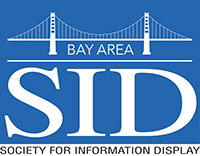Welcome to the Bay Area Chapter of SID
The Society for Information Display
July Seminar
Worlds and Time Colliding: Combining an Old-School Approach to Information Displays with Cloud, Mobile and AI
Dorrian Porter, Founder and CEO of Vestaboard, Inc.
July 18, 2024
Presentation Abstract
Vestaboard is a beautiful, mechanical display that combines a physical and tactile design to display key information from an infinite amount of sources by leveraging cloud, mobile and AI. You will get a demo of the hardware and software, and hear about the long journey of a start-up getting this hardware to market. You’ll also hear why Dorrian thinks cloud, mobile and AI will accelerate even more novel approaches to how consumers and businesses consume and convey information in the future.
Dorrian Porter, Founder and CEO of Vestaboard, Inc.

Dorrian Porter is the founder and CEO of Vestaboard, which Fast Company named in 2023 as one of the ten most innovative consumer electronic companies in the world alongside Apple, Samsung and LG. He began his career as an attorney at Wilson Sonsini Goodrich & Rosati in Palo Alto, California before his time as a pioneering entrepreneur in areas of cloud software, mobile and now hardware. He was the founder of HigherMarkets in 2000 (now part of Jaegger) and Mozes in 2005 (now part of Merkle).
In-Person Seminar Location
Applied Materials Building 12
3225 Oakmead Village Drive
Santa Clara, CA 95051
The webinar will run in parallel with the in-person event as it did prior to the start of COVID19.
A recording of the webinar will be made available to SID members on www.sid.org.
Join BASID for a Networking Event
 Time: 7:30pm to 9:00pm
Time: 7:30pm to 9:00pm
Location:
Giovanni’s New York Pizzeria
1127 Lawrence Expy
Sunnyvale, CA 94089
Pizza and beverages will be sponsored by BASID. Limited capacity of 65.
Homer Antoniadis
BA-SID Professional Person Spotlight

Homer Antoniadis
With more than three decades of experience, Homer is an accomplished product development engineer, a forward-thinking technology leader, and an effective communicator. He has successfully managed and developed hardware products across diverse industries, including displays, lighting, consumer electronics, photovoltaics, and advanced materials. He currently leads Vermio Consulting, his own firm, making significant contributions to industry success and driving innovation. Additionally, Homer serves as a Board Advisor and Director for several startup companies.
During his tenure as the Chief Technology Officer at Nanosys, a distinguished display technology company, Homer played a pivotal role in advancing Quantum Dot and microLED technology for displays. His work has been instrumental in driving innovation and progress within the field.
Homer’s professional journey has taken him through several prominent companies, such as ISF Incubator, Kateeva, DuPont, Innovalight, Osram, HP, and Xerox, where he held various leadership positions. Additionally, he has served on numerous national and international boards, further broadening his industry knowledge and expertise.
Originally from Greece, Homer earned his Ph.D. in solid-state physics from Syracuse University. His experience in display technology covers the entire spectrum, from R&D to mass manufacturing, and encompasses various applications such as AR/VR microdisplays and large TV panels. With an extensive publication record and over 50 patents, Homer demonstrates a continuous commitment to innovation and progress in his field.
Here is Homer’s LinkedIn profile:
https://www.linkedin.com/in/

